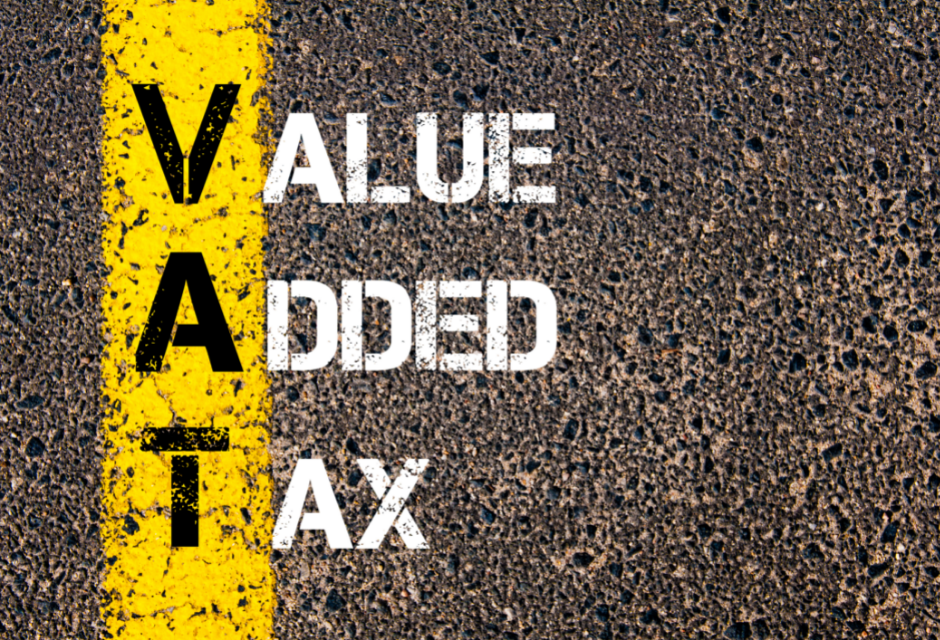Value-added tax (VAT) is levied on a product and is applied at every stage from manufacture to sale. The amount of VAT paid by the user is based on the cost of the product minus the cost of the material used for the product and already taxed at the previous stage.
Table of Contents
- Meaning of VAT
- Understanding VAT
- History of VAT
- How VAT works
- Advantages and disadvantages of VAT
- Why Proponents choose to introduce VAT in the US:
- Is there a VAT in the United States?
- Who will benefit from VAT and who will not?
What is Value Added Tax (VAT)
Value-added tax is a consumption tax and is the most common form of sales tax in the world that is levied in more than 160 countries, including all developed economies except the United States. "Value creation" is the difference between actual selling to the customer and purchasing goods and services from another company. It includes the sum of compensation and salaries, payments of interests, other wages (such as health insurance), and company profits.
Let us understand VAT using an example.
Suppose a farmer grows rice and sells it to a restaurant for $ 20. The restaurant owners process rice into a special meal and sell it to customers for $ 100. The added value of the restaurant owners is $ 80, which is the difference between selling and buying.
Furthermore, we assume that the farmer’s added value is $ 20 since he has no input cost. The total value added at each production stage corresponds to the selling price of the item (the US $ 100 in this case).
VAT or Value Added tax is immensely utilized and popular because it creates significant income for the economy and is comparatively easier to manage, unlike income tax. It does not have any influence on household savings or investment decisions. In 2015, the Organization for Economic Co-operation and Development was the third-largest source of income after VAT accumulated was averaging 5.8% of GDP.
Understanding VAT
VAT is based on consumption, not income. As compared to the income tax, which imposes more tax on the wealthy, VAT is calculated the same for each purchase. VAT systems are used in more than 160 countries, more commonly seen in the European Union.
- Proponents say VAT will increase government revenues without the need for wealthy taxpayers to charge more, as in the case of income tax
- It is also simpler and more standardized than traditional sales tax and has fewer compliance issues
- Many argue that VAT is a regressive tax in nature, putting a bureaucratic burden on businesses while improperly financially burdening low-income consumers
- Both VAT critics and advocates claim it basically as an alternative to income tax, but it doesn’t hold in the case of the UK wherein both income tax and VAT are levied
History of VAT
Several developed countries belonging to the Organization for Economic Co-operation and Development (OECD) have VAT taxation systems. The United States of America is the only exception.
- Most of these countries introduced the system in the 1980s. Results vary, but VAT countries generally do not have low public debt or small budget deficits
- According to a study by the International Monetary Fund (IMF), all countries switching to VAT have increased potential for future income, but initially feel the negative impact of lower tax revenues
- VAT has gained negative implications in some parts of the world and has politically hurt its supporters. For example, in the Philippines, Sen. Ralph Recto, a major supporter of VAT in the early 2000s, was voted out when he ran for re-election for introducing VAT. But a few years after it was introduced, the public eventually accepted the tax. Sen. Ralph Recto eventually found a way back to the Senate, where he became a proponent of the expanded sales tax
- In 2009, France, drastically reduced its VAT rate by almost 75% from 19.6% to 5.5%. It then raised the standard VAT rate to 20% and reduced the tax rate on some products
- In many developed countries, the introduction of the VAT system has led to various results. According to one study, the initial switching of a few countries towards introducing VAT is initially experiencing the negative effects of lower tax revenues
How VAT works
VAT is levied on gross profit at all points in the manufacturing, distribution, and sales process of a product.
Taxes are assessed and collected at all stages as compared to the sales tax system, where sales tax is paid only by the customer that too towards the end of the supply chain.
For example, suppose a cotton shirt is sold by XYZ brand, and once it is sold to the customer, he is liable to pay sales tax on the product of 10% sales tax.
VAT works quite differently and this is how:
ABC manufacturer procured raw cotton for $ 2 and paid 20 cents as VAT to the Government on the raw material.
The manufacturer then makes a shirt and sells it to the XYZ retailer for a total of $ 5.50 ($ 5 price and 50 Cents as VAT).
The manufacturer pays XYZ retailer only 30 cents. This is the total VAT at that time minus the previous VAT from the raw material supplier. Note that 30 cents are also 10% of the manufacturer's gross profit of $ 3.
Finally, the retailer sells the cotton shirt to the customer for $ 10 and $ 1 VAT, for a total of $ 11. The retailer pays XYZ retailer 50 cents. This is the current total sales tax ($ 1) minus the 50 cents sales tax previously collected by the manufacturer. 50 cents also account for 10% of XYZ retailer’s gross profit.
Advantages and Disadvantages of VAT
In a financial debate, US sales tax proponents suggest that replacing the current income tax system with a VAT tax system will have many positive effects. Let us look at the various advantages of VAT
- Replacing other taxes, such as income tax, with VAT closes the tax loophole
- VAT provides a stronger incentive to make more money than progressive income tax
Disadvantages of VAT
- VAT causes higher costs for businesses
- VAT can promote tax evasion
- Transfer costs and application of VAT at every level lead to higher prices in consumption goods.
- VAT is especially burdensome for low-income consumers
Why Proponents choose to introduce VAT in the US:
1. Advantage - Closing tax loopholes
Proponents argue that VAT not only greatly simplifies complex federal tax laws and makes the Internal Revenue Service (IRS) more efficient but will also make tax avoidance much more difficult. VAT will have the potential to collect revenue even on the online product sold in the United States
2. VAT will provide stronger incentives to earn
When VAT replaces US income tax, it removes the complaints of success raised against the progressive tax system: citizens are allowed to hold more of their money and they buy goods. It is taxed only when. This change does more than just create a greater incentive to earn. It also encourages savings and prevents insignificant spending.
Disadvantages:
1. VAT could also mean higher costs for businesses
Opponents have pointed the potential disadvantages of VAT, such as increased costs for entrepreneurs across the production chain. Since VAT is calculated for the product at every step of the manufacturing to the sales process, VAT accounting alone puts a heavy burden on the enterprise and the added expense or cost is passed on to the customer.
It becomes more complicated if the transaction is done internationally as well as domestically. Different countries may have different interpretations of how taxes are calculated. Not only does this increase bureaucracy, but it can also lead to unnecessary delays in transactions.
2. Encourage tax evasion
VAT systems are easy to maintain but costly to implement. Tax evasion may continue and may become even more widespread if the general public does not fully support it. Small businesses can try and escape VAT by not giving a receipt to their consumers and promoting to them that they can get the benefit of a lower price of the purchased product if a formal receipt is not issued.
3. The conflict between state and local governments
In the United States of America, VAT can result in disputes with the governments that presently have their own sales tax
4. Higher price
Critics point out that consumers usually have to pay higher prices on VAT. VAT theoretically distributes the tax burden on the value-added of goods on the way through the supply chain from raw materials to final products, but in reality, the enhanced cost is normally passed on to the customer.
Is there a VAT in the United States?
No, there is no sales tax in the United States. State and local governments set and collect their own sales tax, relying primarily on property taxes, and the federal government raises funds primarily through the income tax system.
Who will benefit from VAT and who will not?
If VAT replaces income tax, wealthier consumers can ultimately stay ahead. In the case of a system of a flat tax, the VAT effects will be less noticeable to the wealthy than to the poor, who spare their income on necessities. In short, low-income consumers will use the VAT system to pay a much higher percentage of their income in taxes.
Conclusion
Value Added Tax (VAT) is a flat-rate tax levied on a product. With VAT, a portion of the tax amount is paid by the various parties and it is a tax on a product or service when the seller adds value to the product or service. As with sales tax and excise tax, consumers pay sales tax which is usually a percentage of the selling price. There is no VAT in the United States. However, consumers are required to pay federal sales tax on the purchase of products. There are VATs in more than 100 countries.
Key Takeaways
- Products are subject to VAT at all points in the supply chain to which VAT is levied
- VAT proponents argue that by imposing more on the rich through income tax, the government's revenues will increase without penalizing the rich
- Critics say VAT is an undue financial burden for low-income taxpayers
- Many developed countries have applied VAT, but the United States is not one of them
Related Articles











